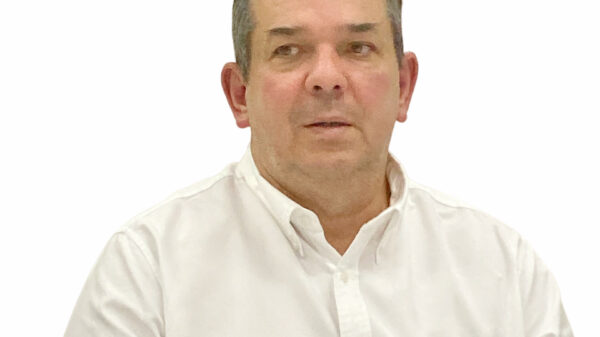Health emergencies can happen anywhere. But there’s nothing worse than suffering a heart attack while you’re behind the wheel.
That’s especially true during the holiday season when parties abound and the stress and excitement levels are high.
When this health emergency happens, a driver can lose control of his or her vehicle, hit the one in front or in the next lane, or worse, veer to the opposite direction of the traffic flow and cause a head-on crash.
Though no official numbers are indicating how often heart attacks occur, they often happen especially during the holiday season when traffic congestion is heavier than usual and motorists with elevated risks of this health condition easily get stressed.
Even losing one’s temper could trigger a heart attack (and still suffer from it hours after he or she has calmed down).
It doesn’t help that motorists are exposed to high levels of air pollutants — e.g., from exhausts — especially when traffic is bad and they are “trapped” in a bumper-to-bumper situation. Heart attacks are also more common when air pollution levels are high.
People who breathe polluted air regularly are more likely to have clogged arteries and heart disease. Sitting in traffic may be particularly dangerous because it can combine car fumes with anger or frustration which eventually leads to suffering a heart attack.
Then there’s also the instance of overindulging in food and drinks, especially during parties, that could also trigger a heart attack particularly in people already diagnosed with a heart disease.
Decades ago, health experts noticed that more people suffered from a heart attack during December and January. A closer look at the numbers showed that the spike was most pronounced in the weeks surrounding Christmas and New Year’s Day when people usually consume heavy meals.

Don’t ignore the symptoms
“Motorists often ignore the symptoms believing they will simply go away. The important thing is that if you experience pressure or tightness, or a squeezing or aching sensation in the center of the chest or even pain that spreads to the shoulder, arm, back, neck, jaw, teeth or occasionally upper abdomen, don’t ignore them,” warned cardiologist Adolfo Bellosillo of the Makati Medical Center’s Cardiac Rehabilitation.
“A heart attack while driving is one of the worst things that could happen as this condition may cause a traffic accident and serious harm or even death to other motorists and pedestrians,” he added.
A heart attack occurs when the flow of blood to the heart is severely reduced or blocked. The blockage is usually due to a buildup of fat, cholesterol and other substances in the arteries that supply blood to the heart muscles (coronary arteries).
During a heart attack, a lack of blood flow causes the tissue in the heart muscle to die, which is often a very painful experience.
Chest tightness is often the first sign of a heart attack. But when it comes to women drivers, they may experience other symptoms that are typically less associated with a heart attack like shortness of breath, nausea/vomiting and back or jaw pain.

(Photograph by CHARLES BUBAN for the Daily Tribune) DURING a heart attack, the driver can lose control of his or her vehicle, hit the one in front or the next lane, or worse, veer to the opposite direction of the traffic flow and cause a head-on crash.
First thing to do
Bellosillo gave this advice to people who suddenly experience symptoms of a heart attack while driving: “Ease off the accelerator and try to find an opening in the flow of traffic to allow you to steer to a safe place and bring the vehicle to a standstill as soon as possible.”
“If you have a passenger with you, ask him or her to assist you to safely steer the car to the side of the road.”
Keeping calm is still the best thing to do, reminded Bellosillo, as the situation could get worse if one or everyone in the vehicle panics.
Doctors also noted that the patient should be brought immediately to the hospital’s emergency unit within an hour of heart attack symptoms. Timing is everything when it comes to these symptoms because when they’re immediately recognized the patient’s condition can be quickly addressed.
Keeping emergency numbers of expressways, barangays, police stations or hospitals (to inform where the vehicle is located and the kind of emergency situation involved) will be useful, especially if driving to the hospital by either the patient or his or her passenger is no longer possible.
It’s also important to always activate the hazard warning lights of the vehicle to avoid accidents or be able to make people aware of a possible emergency situation.
Perform CPR if trained
If the patient goes into cardiac arrest, he or she loses consciousness. This is when those with resuscitation training should immediately perform cardiopulmonary resuscitation or CPR on the patient.
This is an emergency procedure that combines manual chest compressions with mouth-to-mouth artificial ventilation to preserve brain function until further steps can be taken to restore blood circulation and breathing.
Some emergency personnel advise that if you’re not trained in performing CPR, then at least provide hands-only CPR, which means uninterrupted chest compressions of 100-120 a minute until emergency personnel arrive. Simply put, this technique employs pushing down the hand hard and fairly fast on the middle of the chest.
Avoiding a heart attack while driving should be a primary concern. There are several heart attack “triggers” but also some ways to avoid them.
Let’s say, that since driving in heavy traffic could affect people already at elevated risk of suffering a heart attack, maybe it’s best to leave the house early to avoid the frustration that they might experience while being stuck in traffic.
It’s proven that road rage exacerbates an already dangerous health situation. Practicing deep breathing is an excellent way to destress when you’re caught in anger-inducing moments.
If you’re feeling particularly overwhelmed by emotions and really irritated, pull over and try to relax at a safe location such as a shopping center or fuel station. Then, try to calm down by closing your eyes, listening to soothing music and focusing on your breathing.
Getting out of the car for a short walk or a drink of water could help, too.
Don’t overeat
When attending parties, think twice before going back to the buffet table for a second or third helping, especially if you’re driving after the celebration. It may hurt more than having a bigger waistline since consuming large amounts of food in one sitting could lead to higher levels of the stress hormone norepinephrine in your body.
Norepinephrine can raise one’s blood pressure and heart rate, and may trigger heart attacks in some people. The thing is, the heart attack may happen while they are behind the wheel.
Some vehicle models already have the ability to park or even detect drowsy drivers (those who veer away from their lane are steered back by the vehicle into the correct lane) and even suggest map routes to particular destinations.
To make vehicles safer and protect their passengers, engineers are now perfecting a technology that could detect if a driver is having a stroke or heart attack.
In fact, Mazda is already testing the said technology on one of its vehicles and could be introduced in Japan, come 2025. The technology will be able to detect signs — through cameras inside the vehicle — of a stroke or heart attack and automatically park the vehicle quickly to a safe spot, such as the curb of the road.
According to Mazda, the vehicle will then start honking, with its blinker and hazard lights flashing while sending an emergency call to the ambulance and police. Mazda is planning to include this safety technology both in their luxury and affordable models. This holds promise for Japan, which is one of the most advanced aging societies in the world.
For those lucky enough to have survived a heart attack, getting back behind the wheel is just another step in their road to recovery.
Doctors cautioned though, that it is important that these patients are really ready to go back to driving. If they still aren’t prepared to hit the road after recovering from a heart attack, they can travel as passengers anyway until they’re ready to drive.
The trauma of suffering from a heart attack while driving has been a problem for some patients. But there are ways that could slowly bring back the confidence in driving that they once had. They can ask someone to accompany them while driving until they feel that they can go out alone.
When they finally find themselves driving solo, taking familiar highway and street routes they know by heart would be a good start. Stress is a menace, so they should make sure to avoid driving during peak hour traffic. When they’re ready to take lengthy trips, taking regular breaks is a must.
And if there’s a wonderful scenery that they can feast their eyes on, they should savor the moment and relax.
Not everyone will be lucky to survive a heart attack while driving. Be mindful of your health and always be ready for emergencies, especially when you’re on the road.
This will help avoid accidents that could unfortunately involve other motorists. Remember, it’s not just your life that’s worth saving, but that of others, too.

















